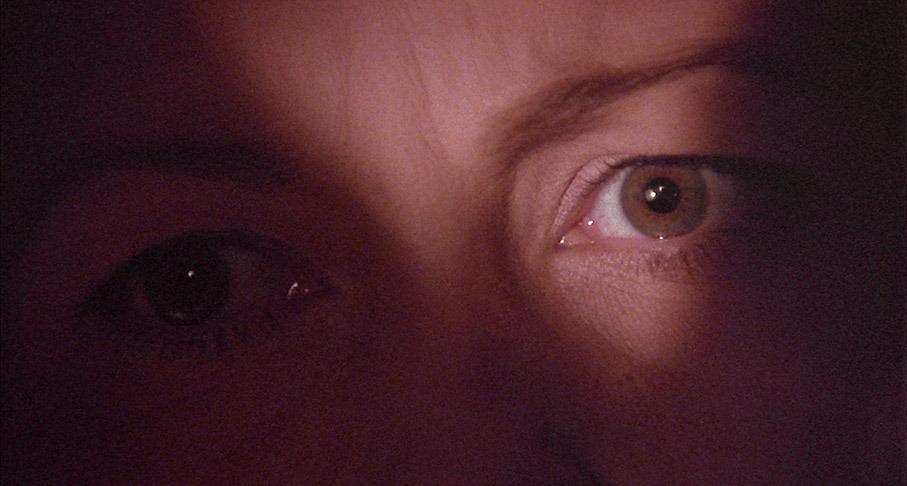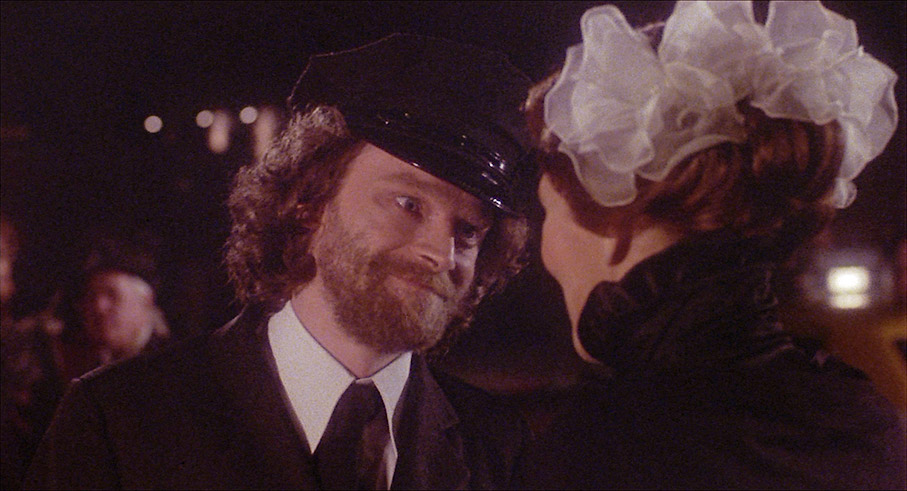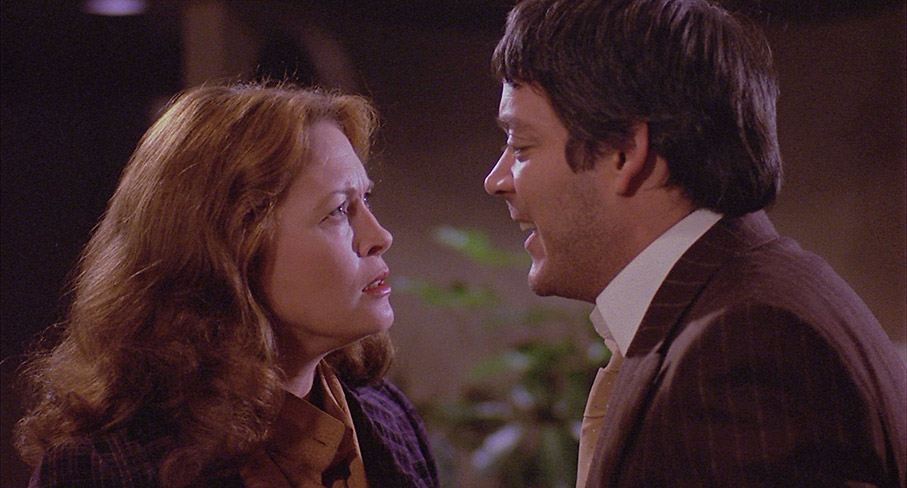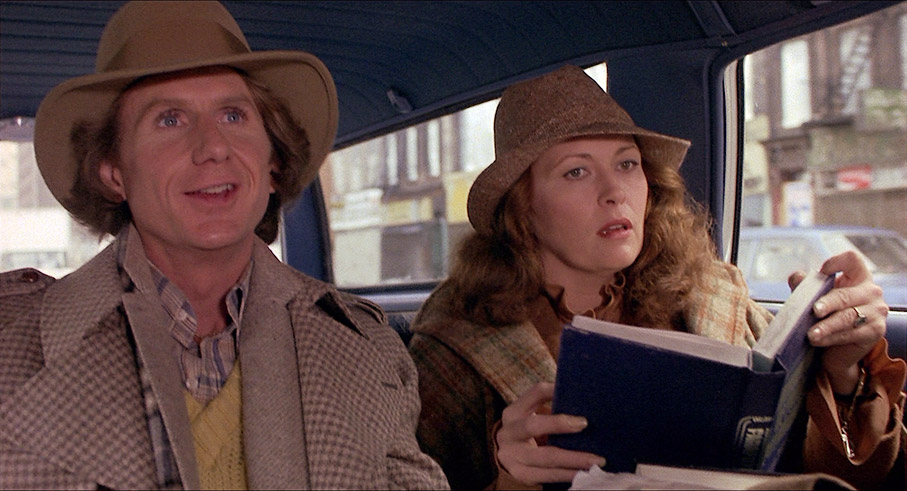|
When it comes to what actually happened to a film when the project changed hands, fell by the wayside, or had its shape or content altered during the course of its production, it's rare that all accounts will be unified in their opinion or even their so-called facts. Rumour and speculation play their part, and for almost every claim you'll encounter about how the film we ended up with came to be, you'll be able be to find a counter-claim. Out of this has grown a whole slew of YouTube videos whose aim is to bust holes in popular and long-held myths, but in the process the evidence offered up by many of these very same videos has also found itself subject to challenge. A popular favourite is the debate over whether this or that actor improvised a line that others claim was in the screenplay from the earliest draft. Often, such stories can change with the passing of time, as interviews we did not have access to in pre-DVD extra days offer contrary views to the one once reported in a solitary magazine, which was sometimes based on an interview with a single high-ranking member of the production team or cast, who may or may not have had their own agenda. I have no doubt that some of these stories were down largely to industry politics, bad feeling on the part of the aggrieved party, or a desire to discredit someone you've since fallen out with, whilst others were the result of poor research or lazy reporting, of grabbing a tasty rumour and running with it.
This is, I'll admit, a long-winded build-up to something that doesn't really warrant it. Back when I was writing my film school dissertation on an up-and-coming young filmmaker named John Carpenter, almost all of my research was conducted at the BFI Library in London and drawn from articles written in a variety of publications and stored on microfiche, which for years was also a favourite method of researching old crimes in 80s American thrillers. Information on the director was sketchy back then and was hard to cross-reference – you'd find one jigsaw piece here, another there, and you built up an overall picture from what you discovered, and had to ignore gaps that would not be filled in until further articles appeared, more interviews were conducted and the internet arrived to give us access to it all. Back then (we're talking just after Halloween and before The Fog), it was almost impossible to find out much about projects that Carpenter had not yet directed or that had passed into other hands. One of these was a script titled Eyes, in which a woman begins having visions in which she sees through the eyes of a serial killer as he commits his murders. And as he kills, he's getting closer to her. Neat, huh? From what I was able to glean from my research at the time, the script was optioned by producer Jon Peters and Carpenter was originally slated to direct. The acclaim he had received in Europe for Assault on Precinct 13 was prompting some initially dismissive American critics to re-evaluate the film, and Eyes had the potential to be his big break. The story had it, however, that Peters insisted on a number of key changes to the story that I can't reveal here without spoiling the film for first-timers. These apparently undermined the taut simplicity of Carpenter's original, an approach that he went on to realise to perfection in Halloween the very same year. Word had it at the time that, unable to reconcile his differences with Peters, Carpenter chose to walk and the more experienced Irving Kershner was brought in to helm the project instead. When interviewed about the project more recently, however, Carpenter assured us that the script was bought by Peters, initially as a vehicle for his then wife Barbara Streisand, and that's about as far as his involvement in the project went. Looks like I got it wrong then. I was thus intrigued, and more than a little smug, to read in the first article in the booklet that accompanies this release that the results of my original research were likely closer to the truth than I had come to believe.

This youthful infatuation with the cinema of John Carpenter (one I'll happily admit I still have for his early work) meant that I first approached the retitled Eyes of Laura Mars with just a hint of prejudice, wondering from its opening frame how it would have played had it been directed by Carpenter from his unmolested screenplay. Watching it again all these years later, unencumbered by speculation about what might have been, I was definitely more open to its positive qualities, though some of the things that niggled me on that initial viewing continued to do so this time around.
Laura Mars (Faye Dunaway) is a successful New York fashion photographer whose images court controversy for their blend of eroticism and violence. During a big budget shoot in Columbus Circle, she has a vision in which she sees through the eyes of a killer as he attacks and murders a woman on the stairwell of her apartment block. Her claims are initially dismissed by police investigating the killing, but detective John Neville (Tommy Lee Jones) becomes interested in Laura's story after noticing a strong similarity between some of her images and some unpublished crime scene photos. As Laura finds solace in the arms (and the bed) of the protective Neville, her visions continue, and people close to her start to fall victim to the unidentified killer.
The case has been made (and is made again on this disc) for seeing Eyes of Laura Mars as the first American giallo thriller, and it's a valid one. A number of the sub-genre's key elements are here, from the visually stylised POV murders to the film's attempt to misdirect us by casting suspicion on individuals who may or may not be the killer. It also boasts one hell of a cast, with some initially surprising choices that are later revealed to have their roots planted partly in tradition, a (frustratingly) near-impossible aspect of the film to discuss without getting into serious spoiler territory (I'll get to this in a minute). Faye Dunaway, fresh off her Oscar win for Network, takes the title role from Streisand, (she apparently objected to the "kinkier" aspects of the story), and she really delivers here, bringing the sort of commitment to the role of a woman terrorised by murderous visions that I simply cannot image Streisand portraying anything like as convincingly. It's always great to see Tommy Lee Jones in a substantial supporting role as Detective John Neville, and the wonderful Brad Dourif here gets one of his most sympathetic roles as Laura's loyal chauffeur Tommy Ludlow. René Auberjonois walks a delicate line as Laura's camp producer Donald Phelps, and Raul Julia is both magnetic and effortlessly intimidating as Laura's constantly cash-strapped ex-husband, Michael.

So, here's the thing. As I suggested above, there's no way for me to talk about the casting of the support roles beyond positive comments about the performances without revealing (or at the very least dropping dangerous hints) about some of the key plot twists. The following paragraph is thus only for those who have already seen the film. Seriously, if you haven't then skip ahead to the paragraph that follows. You can easy do so by clicking here.
OK, final warning, spoilers ahead. Given his later typecasting as misfits and criminals, Brad Dourif's role here as Laura's chauffeur Tommy is retrospectively refreshing. Sympathetic, likeable and loyal to a fault, it's a role that draws on Dourif's natural charisma instead of the dangerous edge suggested by his emotional intensity, angular features and piercing stare. It gives the actor the opportunity to breathe, while his unkempt appearance and unrelaxed body language make Tommy seem interesting from the moment we first encounter him. He feels like the real deal. That events prompt him to confess his previously undisclosed criminal background to Laura, and that she refuses to let this alter the high regard in which she holds him, only serves to confirm that he is a reformed character whose devotion to his employer is genuine and heartfelt. Only later does Kershner's real game plan become evident, when suspicion falls on Tommy and we are encouraged to view him as the prime suspect for the killings, in part because he's played by an unkempt Brad Dourif and not by a clean-cut actor with a heartbreaker smile, something confirmed by Kershner on his commentary track. But even the first time around, I never swallowed the suggestion that Tommy could be the killer. Perhaps Dourif is just too convincing in his apparent reformation, but I'd also be surprised, especially all these years later, if anyone buys into the idea that a murderer whose identity is being so carefully concealed would be correctly unmasked so long before the ending and that all we would then be required to do is wait for the cops to find the evidence they need and take him down, and hope they do so before he gets to Laura. Similar thinking was doubtless behind the engaging offbeat casting of Tommy Lee Jones as Neville, a man whose narrative role is later revealed to be something other than what we've been led all along to believe, a turn of events that's sold in part on the idea that Jones is hardly a typical romantic second lead and that we should be kicking ourselves for believing that he could be. It's in the killer's anonymity that the Italian giallo link is, retrospectively, at least, at its most potentially harmful – when giallo thrillers go to great lengths to hide the identity of the killer, it's often because it's often because it's a character we've met but would not remotely suspect.

But all this aside, Eyes of Laura Mars is still a solid, involving and workmanlike thriller, albeit one whose intriguing central concept is not quite as effectively realised as it could be. The idea that Laura could find herself seeing herself through the eyes of a killer as he approaches or chases her has considerable potential but is disappointingly only skirted with here – check out the sequence in Katherine Bigelow's Strange Days in which a killer forces his victim to witness her own murder as he sees and experiences it to see just how disturbingly effective this concept can be in the right hands. The film also occasionally plays a little loose with its own rules for the sake of a little excitement, notably when Laura – whose clear (and, given later events, intriguingly layered) explanation to Neville of how she experiences the visions confirms that she is blinded to what is in front of her when she is in their grip – has an episode while driving, and despite a few wall scrapes and a final shop-window crash, successfully navigates sharp corners and other vehicles.
Ultimately, it's the characters and performances that hold the attention and keep the central concept from feeling preposterous, and Kershner has a local boy's eye for New York life and has a knack for peppering busier scenes with interesting detail. There are also some neat touches whose true relevance doesn't always register on a first viewing – just why Laura is so cursed is never even hinted at (and is frankly not important here), but the similarity between two of her earlier pictures and unpublished crime scene photos intriguingly suggests that she's been subconsciously connected to the killer for some time. Despite a few bumps, some of which have admittedly been heightened by the passing of time and their overuse in subsequent films, Eyes of Laura Mars is a polished, well acted and solidly made work that, despite a couple of failed attempts at misdirection, still manages to deliver a couple of real surprises. That said, I still to this day can't help wondering what the film would have played like had Carpenter been able to direct from his original screenplay as originally planned.
Another solid 1080p HD transfer from Indicator, sourced from an HD remaster by Sony. The contrast is nicely pitched, with the black levels solid but not sucking in detail, and the colour is attractively naturalistic, though does have a warmer look in electrically lit night interiors and when the sun approaches the horizon. The image detail is crisp without any obvious signs of enhancement, ensuring that a fine film grain is visible throughout. If there's any remaining damage or dust, I must have missed it. The framing is the original 1.85:1.

The Linear PCM 1.0 mono soundtrack is very clear and with only a slight treble bias that's typical of pre-Dolby films of the period.
Optional English subtitles for the deaf and hearing impaired have been included.
Audio Commentary with Director Irvin Kershner
You don't have to be an avid fan of the film to get a lot out of this busy and informative commentary from director Irvin Kershner, who dives into the process with the enthusiasm of someone genuinely fired-up about the prospect of sharing his thoughts and recollections with a willing audience. He covers a lot of ground here, including how to bypass the need for spoken exposition, shooting in real locations (including the cramped make-up trailer), the actors, the photographs, the decision to cast real fashion models rather than actors as Laura's photographic subjects, the paucity of big close-ups in the film, the semi-improvised elements, and a good deal more. His story about how Raoul Julia was cast purely by chance makes it almost sound like this was Julia's first acting gig (he was already an established stage actor by this point and had made a number of appearances in film and TV productions), and is dismissive of Carpenter's original script (I'm not sure which draft he is referring to here) for having no relevance to his life of New York culture of the time. A very worthwhile extra.
The Eyes Have It (13:24)
Diabolique magazine's Kat Ellinger outlines in some detail the film's stylistic and structural links to Italian giallo cinema and argues that Laura's photos subvert the exploitation of women by always portraying them as the aggressors.

Visions (7:24)
The original making-of featurette, a standard mix of interview material (primarily with Faye Dunaway), behind-the-scenes footage and clips from the film. The framing is an unsurprising 4:3.
Eyes on Laura Mars (8:24)
Over a slideshow of promotional stills from the film, the producer of an earlier DVD release talks about the different drafts of the screenplay, highlighting changes made and scenes that were dropped or added in the process.
Original Theatrical Trailer (3:33)
Ah, how nostalgic to encounter one of those old-school trailers whose throaty narrator's first words are, "In a world…" A reasonable sell that sidesteps serious giveaways.
David DeCoteau Trailer Commentary (3:03)
Exploitation movie director David DeCoteau gushes about one of his very favourite films, provides brief outline of how Carpenter's script became a major studio film, and goes weak at the knees for Dunaway and her performance.
Image gallery: on-set and promotional photography
66 slides of monochrome and colour publicity stills, posters, and pages from the American and Japanese press books.

Booklet
Opening with the main credits for the film and a useful warning about plot spoilers contained within, this typically fine booklet really kicks off with the aforementioned and well-researched essay on the film and its making, suggestively titled Disco Giallo: Fear City through Kershner's Eyes by Rebecca Nicole Williams, who appears to have drawn on some of the same source material that helped to fuel my dissertation. This is followed by a substantial piece on the making of the film by Bruce Williamson from the August 1978 issue of Playboy (how about that, people really did read the articles) that focuses primarily on producer Jon Peters. Finally, we have some extracts from contemporary reviews.
As with Indicator's simultaneously released Blu-ray of Wolf, I definitely got more out of the film this time around than I did when I first saw it, when my Carpenter fanboy credentials definitely impacted on my appreciation of its qualities. The link to Italian giallo makes it an intriguing work to revisit and re-examine, and the cast alone is worth the price of admission. As ever, Indicator have done the film proud, with a fine transfer and a solid set of extras. If they haven't already, fans of the film would do well to get their hands on this release.
|